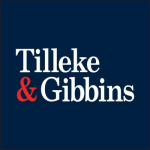AI-generated songs are now making waves in Vietnam on platforms like TikTok, with tracks such as Say mot doi vi em quickly gaining popularity and sparking widespread attention. This phenomenon raises a host of legal and ethical questions:
Who is the author of these songs?
Can they be protected by copyright?
Who is responsible if there is an infringement?
These questions are increasingly urgent as AI music becomes more mainstream in Vietnam.
Copyright protection for AI-generated music in Vietnam
Under current Vietnamese law, copyright protection is reserved for works that bear the mark of human creativity. The 2022 amendments to Vietnam’s Intellectual Property Law reaffirm that only works created by humans are eligible for copyright. In practice, if a human meaningfully contributes to the creative process – by providing prompts, making selections, editing, or arranging – their contribution may be protected. However, if a song is generated entirely by AI without significant human input, it is unlikely to qualify for copyright protection.
When an AI-generated song does not qualify for copyright protection, the question arises as to whether the person who writes the prompts, edits, or compiles the work can still be considered the owner of an asset under the Vietnamese Civil Code. According to Article 105 of the Civil Code 2015, assets include objects, money, valuable papers, and property rights. While AI-generated music that is not protected by copyright is not considered money or valuable papers, it may be regarded as an object (in the form of a digital file or recording) or as a property right if it can be possessed, used, transferred, or exploited for value.
Use of AI-generated works without copyright protection
If a song is not protected by copyright, does that mean anyone can use it freely? Not necessarily. The absence of copyright does not mean the work is entirely free of restrictions. Terms of service from AI platforms may limit commercial use, require attribution, or impose licensing fees. Other rights may also apply.
The person who creates, edits, or compiles the AI-generated work may establish civil ownership over the digital file or recording as a type of digital asset, provided that the creation and use of the asset are lawful and do not infringe on others’ rights. This ownership is not the same as copyright, but it allows the owner to possess, use, and dispose of the asset within the limits of the law and any relevant agreements.
Additionally, laws against unfair competition, impersonation, or violations of personal rights (such as voice, name, or image) may still be relevant.
Voice cloning and related risks
One particularly thorny issue is voice cloning. In Vietnam, performers’ rights protect both live performances and recorded voices. More importantly, copying or imitating a singer’s voice can primarily infringe upon the moral rights and personal rights of individuals as recognised under the Civil Code, which increasingly treats voice as a personal identifier. The main legal risk is the violation of moral rights, such as the right to protect the integrity and authenticity of one’s voice and the right to be recognised as the owner of that voice.
Best practices include obtaining written consent from the person whose voice is used, labelling content as “AI voice”, and avoiding any suggestion that the artist participated in or endorsed the work.
Similarity to existing works
Another significant risk arises when AI-generated music or lyrics resemble existing works. The standard for infringement is “substantial similarity” and access to the original. If an AI creates a segment that is sufficiently similar to a prior work, using that segment in a new recording or arrangement may constitute infringement. The fact that the AI was trained on large datasets does not exempt the output from scrutiny. Even if the input data was lawfully obtained, the output must still avoid copying protected material. Defences such as coincidence, common style, or minor excerpts are assessed on a case-by-case basis, often requiring expert analysis.
Responsibility and benefit-sharing in the AI music ecosystem are complex. Users who prompt, select, edit, or publish AI-generated music are directly responsible for the outputs they release or exploit. AI platforms may also bear responsibility if they provide infringing tools or models, or fail to remove infringing content. Those who invest in, release, or commercially exploit AI-generated music may profit under contract, but they also assume corresponding legal risks, including compensation, takedown, or recall obligations.
Practical recommendations for creators and publishers
For creators and publishers, several practical recommendations emerge. It is important to document the human role in the creative process, demonstrating selection and editing to support claims of authorship.
Similarity checks should be conducted using melody and lyric analysis tools, and expert opinions should be sought when necessary to avoid recognisable copying.
Voice governance is critical. Do not clone an artist’s voice without written consent, label AI-generated voices clearly, and avoid implying artist involvement.
Use models and training data with clear provenance, and ensure all samples, loops, and plugins are properly licensed, keeping records to prove origin.
Internal contracts should allocate rights and responsibilities among authors, producers, singers, engineers, and publishers, including indemnity clauses for intellectual property (IP) claims.
Platform terms should be reviewed carefully for output usage rights, commercial restrictions, and labelling obligations.
Finally, establish procedures for receiving and responding to takedown notices promptly to minimise damage.
Legal outlook in Vietnam
Vietnam is actively shaping its legal framework to address the rapid growth of AI. A draft Law on Artificial Intelligence released by the Ministry of Science and Technology is scheduled to take effect on January 1 2026. In parallel, Vietnam’s Intellectual Property Law is under review, with discussions focused on how to accommodate AI-generated content.
The current framework does not recognise AI as an author, meaning that works created solely by AI may not qualify for copyright protection unless there is identifiable human contribution. This legal gap has prompted calls for clearer definitions of authorship, ownership, and liability in the context of AI-assisted creativity.
While it is still too early to predict whether Vietnam’s upcoming laws will restrict or encourage AI-generated music, the direction appears cautiously optimistic. The government is balancing innovation incentives with ethical and legal safeguards, aiming to foster responsible AI development while protecting creators and consumers.
Key IP takeaways on AI-generated content
AI-generated music challenges traditional IP frameworks on three fronts:
Authorship and protection;
Risks of voice cloning and similarity to prior works; and
The allocation of liability among users, platforms, and publishers.
The safest path forward is proactive: document the creative process, clear rights diligently, and use contractual safeguards. With these measures, businesses can treat AI not as a legal hazard but as a sustainable creative tool in Vietnam’s rapidly changing music landscape.
As Vietnam’s evolving legal landscape offers both opportunities and uncertainties, stakeholders in the music and creative industries should stay informed and engaged with these regulatory developments to navigate the future of AI-generated content.












